Lessons from Shark Week’s Chief Cameraman

saw his first shark on TV when he was a kid growing up in New York City, and it immediately captivated him. Casagrande never grew out of his curiosity for the creature and eventually merged his interest with his profession as a burgeoning cameraman.
He’s since gone on to win two Emmy’s, one in 2011 for outstanding cinematography in nature, and the second in 2013 for outstanding cinematography in a documentary. He has filmed dozens of Shark Week specials for the Discovery Channel, including the franchise’s first trip to Cuba this past year. Included here are images from his recent Shark Week assignments and his account of coming face-to-face with a great white shark.
Photo: Dickie Chivell, in a Plexiglas box known as a “ghost cage,” lures a great white into the area near Guadalupe Island, Mexico, for Casagrande to film after other, non-human types of bait fail. Things got a “little dicey” when one stuck its nose into the cage and almost got inside before Chivell pushed it away, Casagrande says.
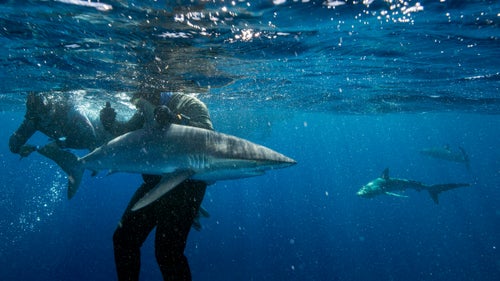
Divers put silky sharks near Cuba into tonic immobility by twisting their tails or holding their snouts. The sharks are left temporarily immobilized, making it easier for scientists to gather data on the animals. When the U.S. lifted travel restrictions to Cuba it created opportunities for scientists from both countries to work together.
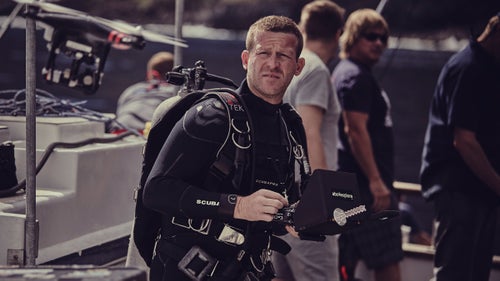
Casagrande prepares to dive near Guadalupe Island, Mexico. He never planned to become a cinematographer, he says, he just wanted to study sharks. He realized after working as a research cameraman that he preferred spending time with the animals in the water instead of analyzing data.
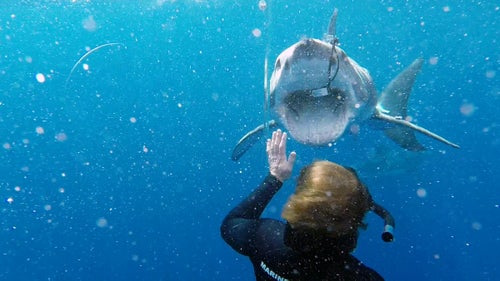
Filming from a cage is like reversing the zoo experience, Casagrande says. The number one rule for working with sharks is to not act like prey. “If I went nose-to-nose with a lion, it probably wouldn’t be as zenned-out an experience as diving with great whites,” he says. Sharks are dangerous, he adds, but not malicious.

Casagrande (right) works with a safety diver while filming with an ultra high resolution camera. The open-sided cage allows Casagrande to swim out when he wants another angle and the shark is friendly. It’s a calculated risk, but Casagrande has swam uncaged with great white sharks about dozens of times and never been bit. “It’s always a polite interaction,” he says. “If they were actually hunting you, you wouldn’t even see them coming.”
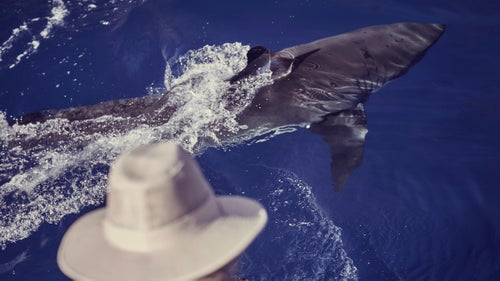
A crew member watches a shark swim by an underwater camera. Casagrande and film crews use about a dozen different types of cameras to capture different angles of sharks. They use everything from infrared cameras to point-of-view cameras to drones.
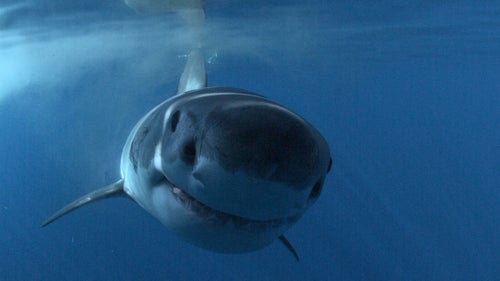
A great white shark investigates Casagrande’s camera near Guadalupe Island, Mexico. Casagrande works to get as close as possible to the sharks, without losing the camera. The thought of losing the expensive gear is sometimes the scariest part of the job.
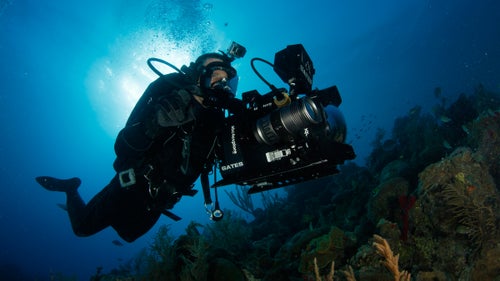
Casagrande swims with an Epic Dragon Red camera which shoots at a resolution of 6,000 pixels or 6k. When visibility is good, Casagrande swims and films without a cage. He sometimes spends 300 days a year on assignment filming sharks, but often brings his family on location. His one-year-old son already loves sharks, he says.
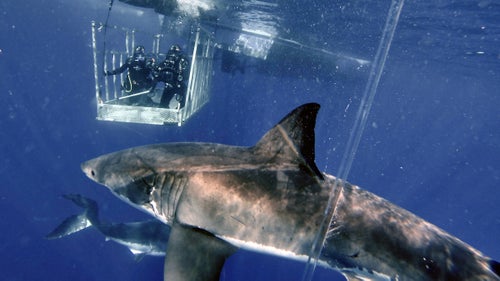
Casagrande, who always wanted to study sharks, feels like he contributes to science through his filming. His shots help people studying sharks to collect data on fast the animals swim, how high they jump, and how they bite.
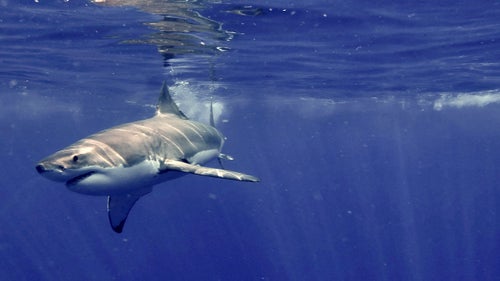
A great white shark cuts through clear water. Casagrande has filmed all over the world, but no place offers clarity comparable to the waters near Guadalupe Island, Mexico. “It’s a great white shark swimming pool,” he says. The visibility is almost endless, whereas in other places he can sometimes see only a few feet in front of the camera.